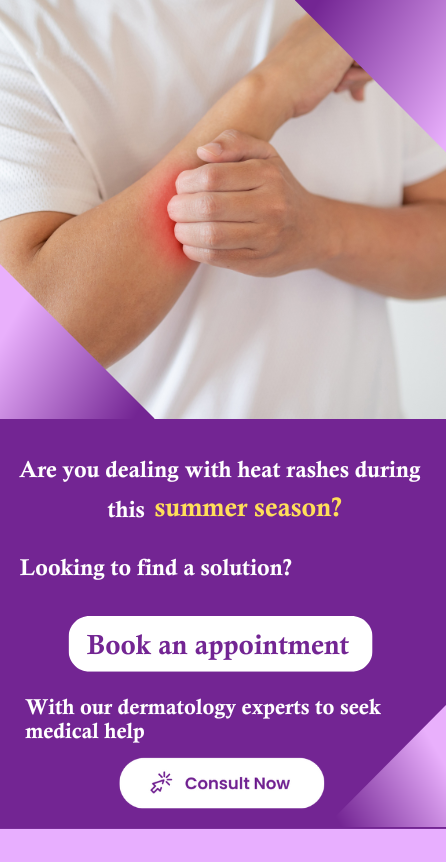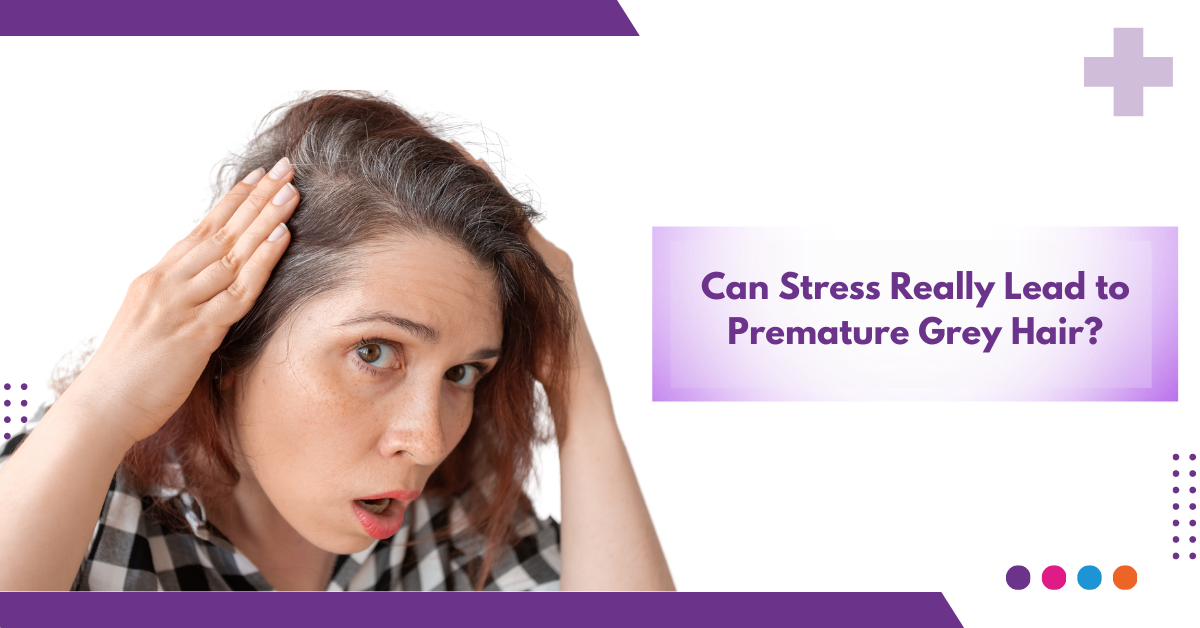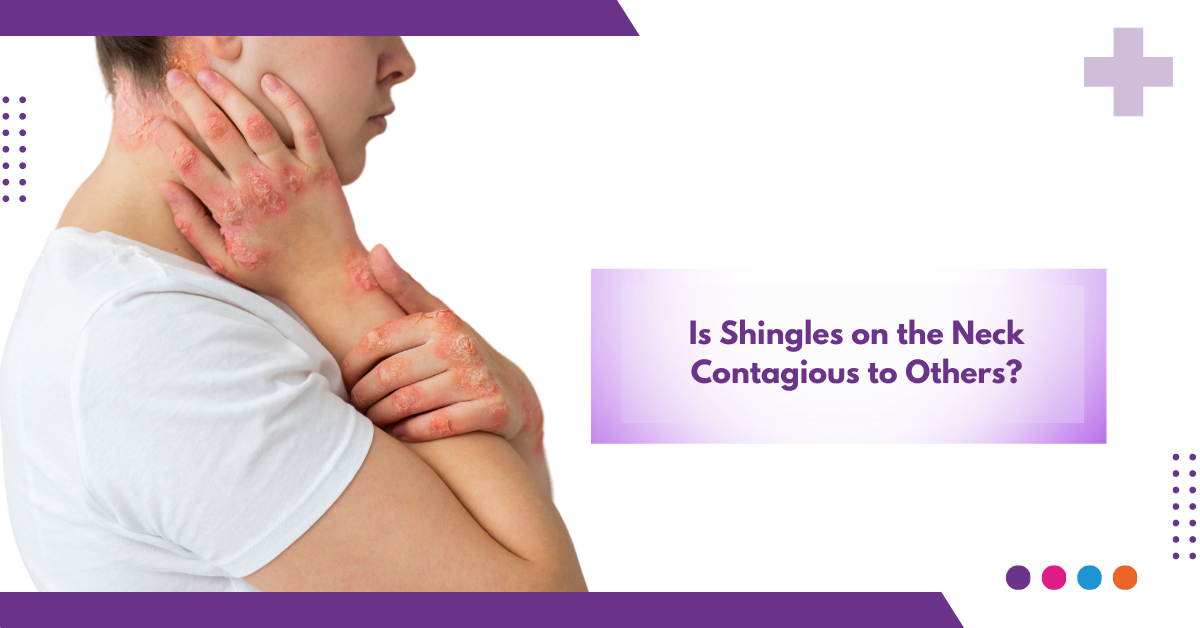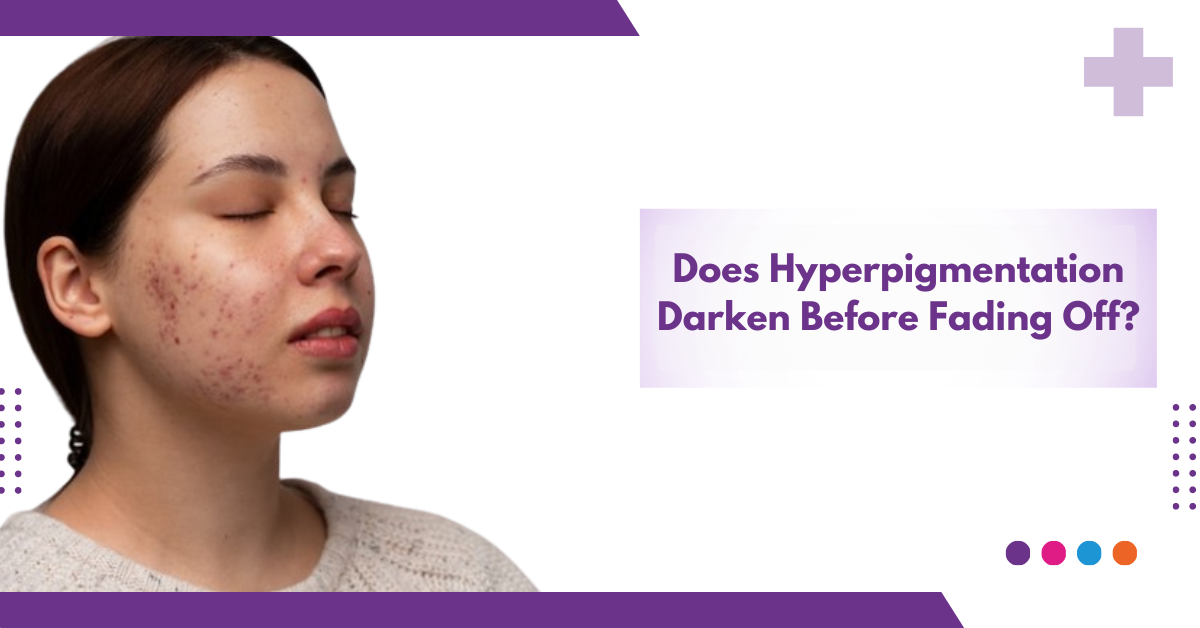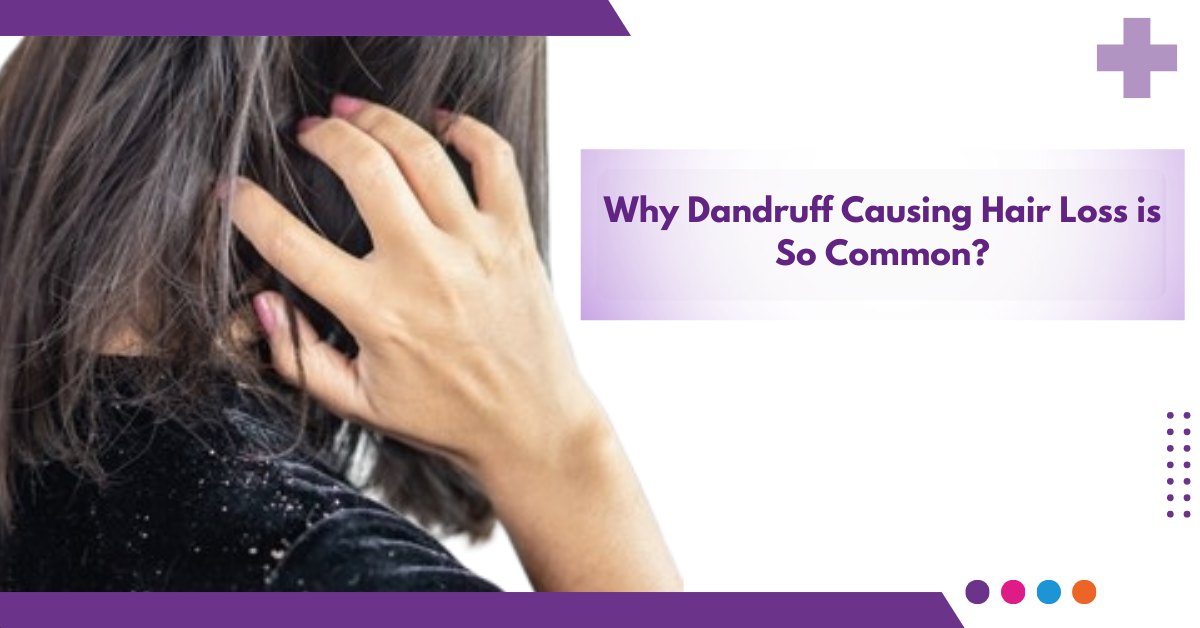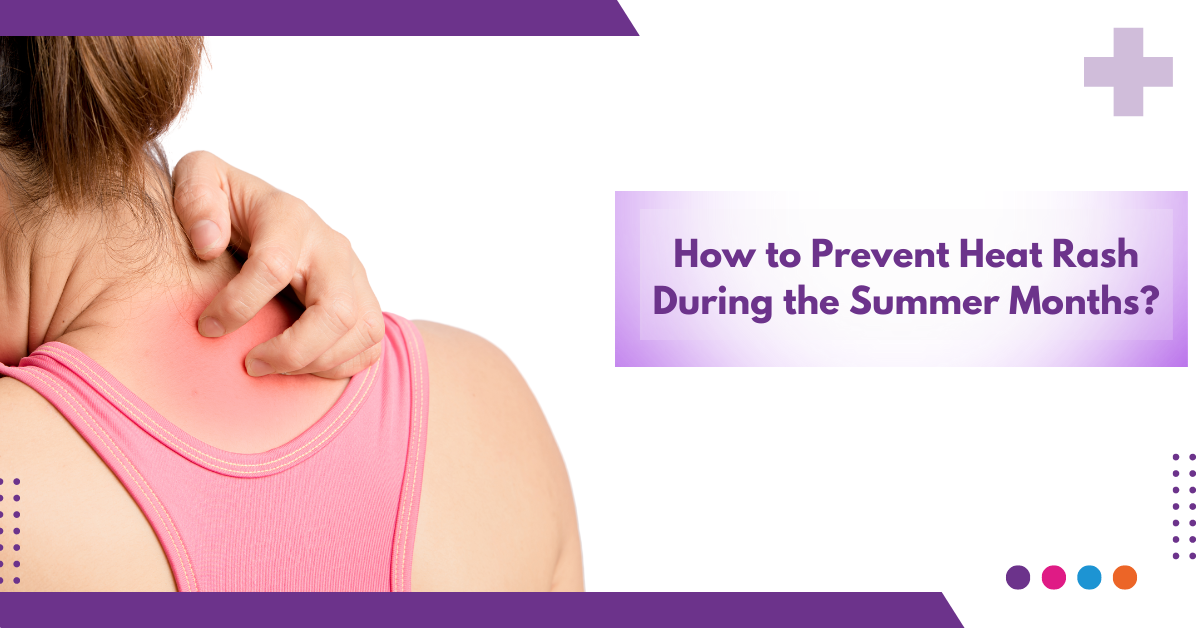

Summers bring that much needed heat from the chilly cold weather. As much as love that summer sun gently falling on your skin, there is an uninvited guest that comes along with summers. Summers may not be intense in the initial days, but as the season progresses it can lead to severe heat which when exposed causes heat rashes on the skin and other skin disease in summer season.
What is a heat rash?
Heat rash, also known as prickly heat rash or miliaria, is a common skin condition caused by blocked sweat glands. When sweat can’t evaporate properly due to hot and humid weather, or because clothing traps sweat against the skin, it gets trapped beneath the surface. This trapped sweat irritates the sweat glands, leading to tiny red bumps and blisters. Heat rash is most common in infants and young children, but it can affect people of all ages. Areas where clothing rubs against the skin, such as the neck, chest, back, groin, and inner thighs, are particularly vulnerable.
What are the symptoms of heat rash?
Heat rash typically appears within a few hours of exposure to hot and humid conditions. Here are some common symptoms:
- Small, red or bumps or blisters
- Prickling or itchy sensation
- Mild burning or stinging
Skin rash in summer season is usually harmless and clears up on its own within a few days with proper care. However, if you experience the following, it’s best to consult a doctor:
- Fever
- Pus-filled blisters
- Worsening symptoms despite home care
What are the three major types of heat rash?
The major types of heat rashes usually found are:
Miliaria crystallina:
This type of rash is the mildest. It occurs when the pores, or sweat ducts, on the surface of your skin become clogged. Usually it appears as fluid-filled, transparent lumps. The lumps are brittle.
Miliaria rubra:
Because it can result in small, inflammatory bumps on your skin as well as an itchy or prickly sensation, this type of heat is frequently referred to as “prickly heat”. The condition your doctor will refer to as miliaria pustulosa is when the bumps fill with pus.
Miliaria profunda:
This kind targets the deepest layer of the skin. This kind of heat rash has firm, painful, or itchy bumps that resemble goosebumps. They might crack and be exposed.
What might be the possible reasons for developing a heat rash?
Heat rash is generally caused when the sweat-transporting ducts that present under the skin get clogged or blocked. It can cause skin irritation from sweat as it cannot pass sweat through its pores. A rash then appears.
The rash’s most frequent cause is:
- When the sweat buildup between your clothing and skin
- Undergoing through hormonal changes
- When hair follicles block your sweat glands
- When there is no air flow between your clothes and skin
Consult the skin specialist hospital in Coimbatore, if you are noticing any heat rashes that are spreading and are causing severe itch.
What are the tips to prevent a heat rash in the summers?
The good news is that heat rash is largely preventable. Here are some key strategies to keep your skin cool and comfortable during the summer months and help in heat rash prevention.
Beat the heat:
Limit excess activity during peak heat hours:
Plan outdoor activities for the early morning and evening when temperatures are cooler. In case you are working out during the day make sure to take breaks, stay hydrated, and perform lighter exercises.
Seek proper cool air:
Even while staying indoors, make sure you have proper air circulation and stay cool. Like sitting under a fan or even in an air-conditioned room.
Take cool showers or bath:
Regularly cool down your body with refreshing showers or baths.
Dress appropriately for the weather:
Lightweight, loose-fitting clothing:
Choose natural fibers like cotton that allow better airflow and sweat evaporation. Avoid tight-fitting clothes and synthetic fabrics like nylon or polyester that trap heat and moisture.
Loose undergarments:
Choose loose-fitting underwear and avoid tight-waistbands that can irritate the skin.
Hats and sunglasses:
Protect yourself from sun rays with a wide hat and sunglasses.
Remember stay hydrated:
Drink plenty of water or fluids:
Aim for more than eight glasses, especially during hot weather and physical activity. Avoid sugary drinks and excessive caffeine, which can dehydrate you. In case you are going outdoors, it is important to carry a water bottle with you.
What are the other tips to follow during summers to avoid rashes and other skin conditions?
Avoid excess sweating:
If you are someone who sweats quite excessively it is important to stay cool and avoid humid environments.
Pat your skin dry:
After sweating, pat your skin dry with a towel instead of rubbing. Rubbing can further irritate the skin.
Limit lotions and ointments:
Avoid using heavy lotions or ointments in hot weather, as they can clog pores and trap sweat.
Sunscreen with caution:
While sunscreen is crucial for sun protection. Thick ointments can trap heat, it is important to choose lightweight sunscreens.
What are the tips to follow for infants and young children?
- Make sure they’re wearing clothes that are loose.
- Let them play in the shade
- Often encourage them to drink water and others fluids
- Give them frequent baths.
Is medical treatment required for heat rash?
Once you cool down and stop sweating, heat rash usually goes away on its own. Any medications that help reduce inflammation and itching can be discussed with your doctor.
Is a heat rash contagious?
Heat rashes cannot spread from person to person. As it is not caused by a virus and bacteria. But heat rashes can spread all over the body, especially in the areas where you sweat a lot.
Important Takeaway:
In conclusion, even though the beautiful summer days invite us to enjoy the warmth and sunlight, prickly heat rash is a common unwanted companion. The key to managing and preventing this skin condition is realizing that it is caused by blocked sweat ducts in hot and humid conditions. Early intervention is made possible by identifying the symptoms, which include discomfort, itching, and tiny bumps. Get in touch with the best dermatology hospital in Coimbatore if your heat rashes don’t seem to go away.






